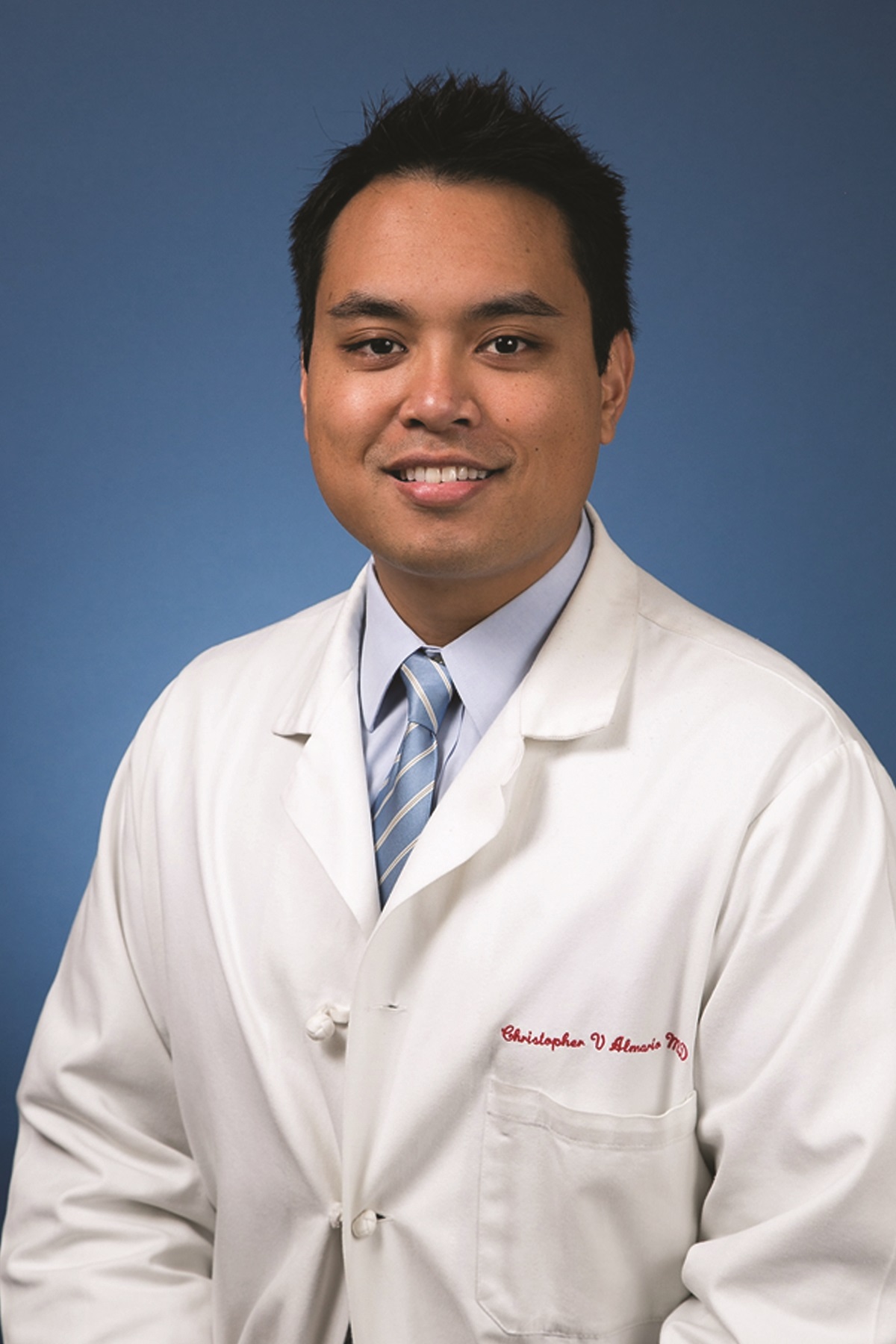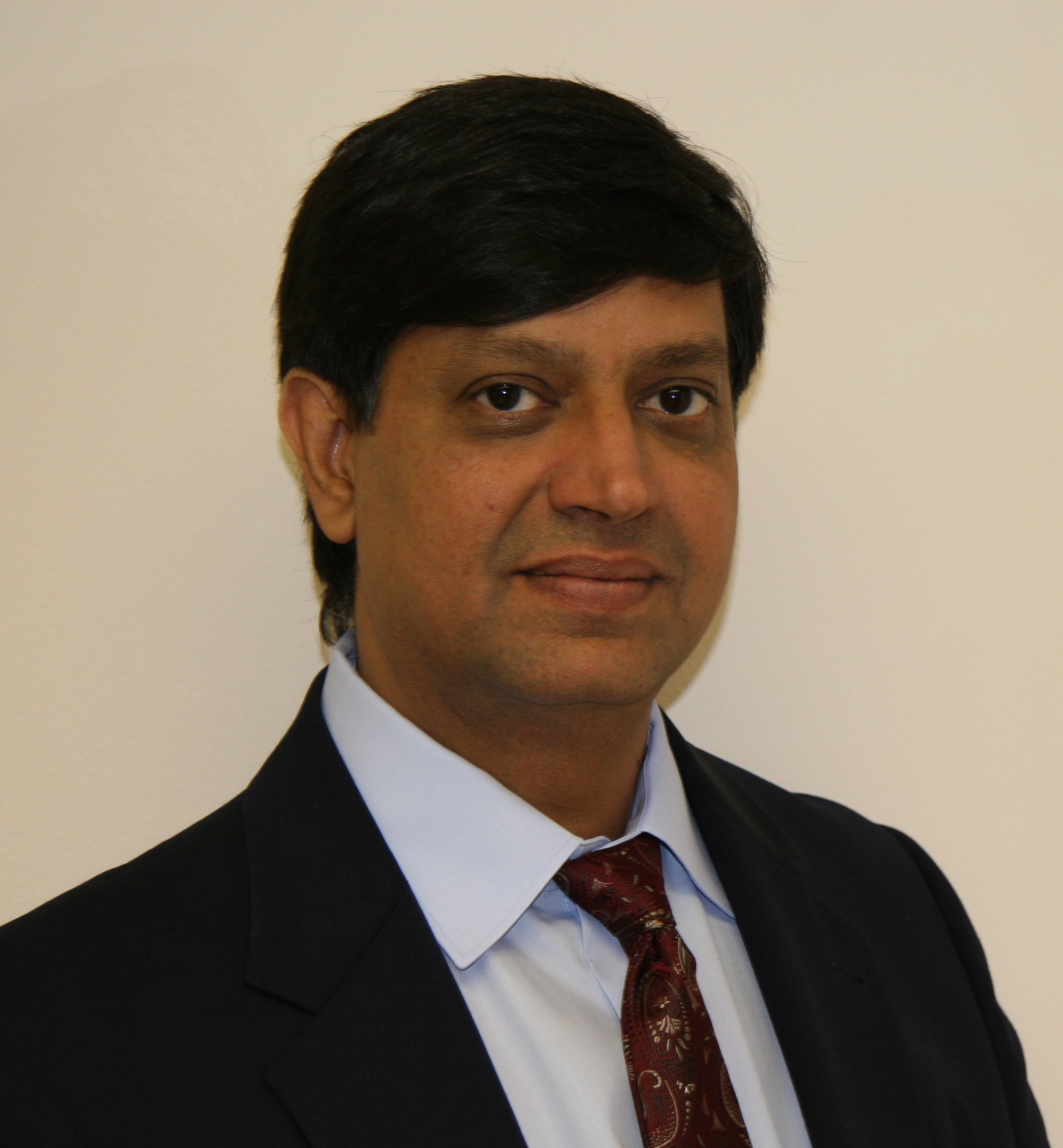Innovation is a necessary function in healthcare. Three gastroenterologists discuss how innovation has driven advances in gastroenterology technology and technique.
Question: What has been the most exciting technology to emerge in GI over the past few years?
Christopher V. Almario, MD, MSHPM, Cedars-Sinai Medical Center, Division of Gastroenterology, Cedars-Sinai Center for Outcomes Research and Education (Los Angeles): In recent years, there have been incredible advancements in the gastrointestinal and hepatology space. These include innovations in colorectal cancer screening, capsule endoscopy, cures for hepatitis C and new biologic therapies, among many others.
While these developments have been exciting and moved the field forward, the way we deliver care has remained largely unchanged. Today's healthcare delivery model centers around the 15 to 30 minute clinic visit, yet patients spend 99.9 percent of their lives outside of the clinic either at home, at work or at play. Having so few touchpoints can make it untenable for providers to gather months’ worth of information from the patient, make an assessment, and have an informed discussion all in the span of a short clinic visit. This is where digital health innovations, particularly smartphone apps, have the potential to change (and hopefully improve) the way we deliver care by tapping into the lives of patients when they are outside of the clinic.
 Subhas Banerjee, MD, FASGE, Chair, ASGE Technology Committee: Although many exciting GI technologies have emerged over recent years, in my opinion, the most important technological advance in the GI space has been the "across-the-board" revolution in advanced endoscopic imaging capability, allowing improved optical diagnostic accuracy, targeted biopsies and precisely guided therapeutic interventions. High-definition and magnification endoscopes with electronic chromoendoscopy capability make it easier to visualize subtle lesions, such as small and flat polyps and patches of dysplastic gastrointestinal mucosa. They allow accurate characterization of polyps, which may in the future allow us to selectively resect only precancerous colonic polyps, while ignoring small benign hyperplastic polyps, which in turn will result in significant healthcare savings.
Subhas Banerjee, MD, FASGE, Chair, ASGE Technology Committee: Although many exciting GI technologies have emerged over recent years, in my opinion, the most important technological advance in the GI space has been the "across-the-board" revolution in advanced endoscopic imaging capability, allowing improved optical diagnostic accuracy, targeted biopsies and precisely guided therapeutic interventions. High-definition and magnification endoscopes with electronic chromoendoscopy capability make it easier to visualize subtle lesions, such as small and flat polyps and patches of dysplastic gastrointestinal mucosa. They allow accurate characterization of polyps, which may in the future allow us to selectively resect only precancerous colonic polyps, while ignoring small benign hyperplastic polyps, which in turn will result in significant healthcare savings.
New digital choledochoscopes have vastly improved diagnostic and therapeutic capabilities within the bile and pancreatic duct. Confocal endomicroscopy now allows us to perform microscopic evaluation of living tissues, improving targeted biopsies in Barrett's esophagus and aiding in the evaluation of bile duct strictures and pancreatic cysts. Similarly, technological advances in endoscopic ultrasound, optical coherence tomography and spectroscopy hold great promise for improving diagnostic and therapeutic capabilities for gastrointestinal disease.
 Michael L. Kochman, MD, AGAF, FASGE, chair, AGA Center for GI Innovation and Technology; Wilmott Family Professor of Medicine, Center for Endoscopic Innovation, Research, and Training, Gastroenterology Division, University of Pennsylvania Health System (Philadelphia): That is a difficult question to answer as there have been so many great devices and concepts. Taking a step back, I would say that the introduction of endoscopic transoral therapies — including those in the obesity and metabolic and antireflux spaces — are the first wave of new technology.
Michael L. Kochman, MD, AGAF, FASGE, chair, AGA Center for GI Innovation and Technology; Wilmott Family Professor of Medicine, Center for Endoscopic Innovation, Research, and Training, Gastroenterology Division, University of Pennsylvania Health System (Philadelphia): That is a difficult question to answer as there have been so many great devices and concepts. Taking a step back, I would say that the introduction of endoscopic transoral therapies — including those in the obesity and metabolic and antireflux spaces — are the first wave of new technology.
Advanced imaging technologies are also reaching clinical practice and their impact is likely to be felt over the next few years. We have also seen other non-endoscopic technologies reach our practices including hepatology with non-invasive means of determining liver damage. If considering the currently available technologies that have been around and in practice for a few years, then the answer would be the impact that radiofrequency ablation for Barrett's esophagus has had on the practice of gastroenterology.
Q: How have procedural techniques in GI evolved over the past few years?
SB: The evolution of endoscopic procedural techniques, complemented by the evolution of supporting technologies, increasingly allow us to offer safe and effective endoscopic therapies for many conditions that previously required more invasive surgical interventions. Thus, evolution of endoscopic mucosal resection and endoscopic submucosal dissection techniques now allow endoscopic resection of very large/flat polyps and early gastrointestinal cancers that previously required surgical resection.
Similarly, endoscopic radiofrequency or cryoablation in patients with Barrett's esophagus and dysplasia spares these patients esophagectomy. Per oral endoscopic myotomy accomplishes treatment of achalasia with a less invasive endoscopic approach. Evolving therapeutic EUS techniques allow us to tackle a number of conditions that previously required either interventional radiology procedures or surgery for resolution.
MK: Multiple advances in GI procedures have occurred over the past five years. Many of the advances allow for endoscopic approaches to what were formerly surgically treated issues and some of the advances have opened up new frontiers for gastroenterologists. The advent of miniature HD cameras and other electronics are fabulous enabling technologies that allow for devices that can be passed transorifice to supplement and supplant what have been traditionally surgical approaches.
Q: How do you stay up-to-date with the latest technology and techniques in the specialty?
SB: I follow gastroenterology and surgical journals closely, attend conferences, network with endoscopists interested in device development and have frequent conversations with major GI technology companies and their representatives about current and new technologies.
For endoscopists who want to stay up-to-date with technology, there are several easy options. The ASGE Technology Committee publishes reports on emerging technology, as well as reviews of more established technology on a regular basis, in GIE: Gastrointestinal Endoscopy, the journal of the ASGE. The ASGE website hosts a comprehensive online catalogue of all published Technology Committee manuscripts, allowing for easy review. GIE: Gastrointestinal Endoscopy and other GI journals publish several studies evaluating new and evolving endoscopic technologies and techniques. The ASGE offers several educational courses including the popular STAR Certificate Programs, which allow deep dives into new endoscopic techniques and associated technologies such as EMR, ESD, POEM, Barrett’s endotherapy, etc., including hands-on training.
MK: It can be difficult to stay up to date; but the most important issue for a gastroenterologist is awareness of future and current changes that may meaningfully impact the care of your patients or upon your practice. AGA and the AGA Center for GI Innovation and Technology is the answer to that question. The postgraduate course, clinical practice meetings, and the AGA Tech Summit (March 31 to April 1, 2016 in Boston) are excellent resources for the clinician and researcher to view current and future innovations in technology, technique and practice.
Q: What changes in GI technology and technique do you hope to see develop in the future?
SB: The major current needs are for safe and efficacious technologies and techniques for the endoscopic management of gastroesophageal reflux, for endoscopic bariatric therapies, endoscopic full thickness resections of GI tract lesions and closure devices for GI fistulas and surgical anastomotic dehiscence. Encouragingly, several new technologies are being developed in all of these areas.
Importantly, GI technologies need to be user-friendly and have low variability in results among endocopists to ensure the best possible outcomes for all of our patients.
MK: We hope to see value-based changes in the management of high-cost, high-risk and frequently seen pathologies.The likely targets are continued advances in bariatric and metabolic disease, gastroesophageal reflux, colonic neoplasia, Barrett's esophagus and irritable bowel syndrome. We hope to see more minimally invasive transoral approaches to GI diseases and equivalent or improved outcomes at lower overall cost. In addition, we need to see continued simplification and local availability of the procedures with quality performance and reduced operator variability built into the devices and technologies.
CA: In the future, I hope to see continued development of innovative mHealth GI and hepatology apps. At the same time, I also hope investigators will continue to rigorously evaluate these apps in well-designed research studies to objectively demonstrate their value. Only then will mHealth apps be widely adopted, thereby dramatically changing and hopefully improving the way we deliver care to our patients.
Q: How can gastroenterologists get involved in driving advances in technology and technique?
MK: Physicians can initiate innovation by developing concepts or ideas and participate in the refinement, studies, and introduction to practice. AGA, through the AGA Center for GI Innovation and Technology, specifically enables this process and facilitates the rational development and introduction of novel endoscopic and non-endoscopic technologies into practice. Anyone with interest in the space should attend our upcoming meeting in Boston (March 31 to April 1) and should contact me at AGACGIT@gastro.org if they are interested in joining the center as an active member. For residents and fellows who are interested in learning more about innovation and advancing the field, we are running an introductory course on innovation on April 2 in Boston.
SB: The ASGE has taken several steps in this direction on behalf of its membership, and indeed of all gastroenterologists. The Preservation and Incorporation of Valuable Endoscopic Innovations program was developed to direct endoscopic technology development toward resolving important clinical issues in endoscopy. The previously mentioned ASGE Technology Committee reviews also typically list desirable future developments and technological innovations required to enhance currently existing technology/techniques.
Several innovative gastroenterologists, who are cognizant of unmet needs, help develop new technology, both independently and in partnership with industry. Consulting for GI technology companies offers another pathway to drive advances in technology. For those with less time, simply providing feedback to GI technology company reps is helpful. Academic practices and larger group practices can set up infrastructure to conduct device research in partnership with industry, which can help shape and drive advances.
For most gastroenterologists, however, the best way to drive advances in technology and techniques is simply to embrace and adopt worthy new technologies and techniques into their day-to-day practice. Widespread adoption of worthy new technologies and techniques will increase the scope of our practice as a specialty, as well as benefit our patients. Large-scale adoption of new technology by gastroenterologists will also be noted by the investment community and will drive increased enthusiasm for seeding innovation in the GI field.
CA: Currently, 68 percent of Americans have a smartphone, and 91 percent of them keep it within arm’s reach most of the time. Along with the increasing prevalence of smartphones, so to has there been an explosion in the number of smartphone mobile health apps. There are more than 165,000 mHealth apps available for download, but an important question remains - which apps are any good? It's one thing to make an app, but it's an entirely different matter to prove its value for both patients and providers. App developers are beginning to realize the potential of mHealth GI apps, and more importantly, the need to demonstrate their value. For example, Bajaj and colleagues developed and validated an app called EncephalApp that detects covert hepatic encephalopathy. Vinding and colleagues created and validated CalproSmart, an app that allows for at-home fecal calprotectin testing.
Over the last five years, our group at the Cedars-Sinai Center for Outcomes Research and Education in collaboration with the University of Michigan, developed an app called MyGiHealth. It has a number of functions including GI symptom and quality of life trackers, personalized education, and a GI history taker. Similar to other groups, our goal was to not only create the app, but to test it in research settings and provide evidence of its value. In the American Journal of Gastroenterology, we published our findings comparing the histories created by the app’s GI history taker compared to those written by physicians. Here, we found that reviewers deemed MyGiHealth's histories to be of higher overall quality and more complete, succinct, and relevant vs. those written by doctors. Currently, we are testing whether the app enhances the patient-provider interaction and positively impacts patient outcomes.


